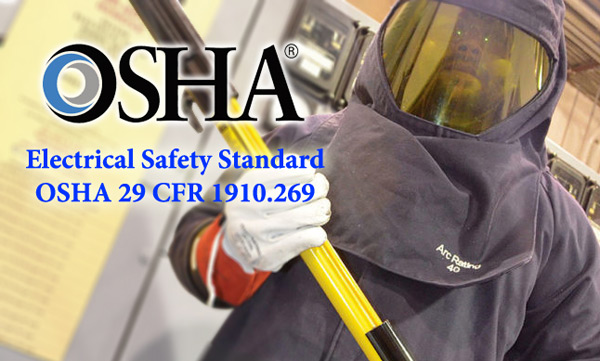May is National Electrical Safety Month, which serves as an important reminder for workers to prioritize electrical safety in the workplace. Working with electricity can be dangerous, and electrical accidents can cause serious injury or even death. Electrical hazards can be found in many workplaces, including construction sites, factories, and offices. It is essential to understand the hazards associated with working with electricity and take steps to prevent accidents. This blog will provide workers with important information and preventative methods to help them stay safe when working with electricity.
Identifying Electrical Hazards
Before any work is performed involving electricity, workers should always identify potential electrical hazards. Electrical accidents may result from one of the following factors:
- Defective power tools
- Defective extension cords
- Overloading a switch or over-riding a by-pass
- Not grounding electrical equipment
- Coming in close contact with live electric lines or overhead power lines
The Four Most Common Injuries
There are four main types of electrical injuries:
- Burns – These occur when the skin is exposed to an electrical current.
- Falls – An electric shock can cause someone to lose balance and fall from an elevated surface, leading to injuries.
- Electrical Shock – When a person comes into contact with an electrical energy source, they can experience internal and external damage to their tissues, ranging from mild to severe.
- Electrocution – The condition of being killed by an electric shock that is strong enough to disrupt the normal function of the heart and other vital organs.
Safety Precautions When Working with Electricity
To minimize the risk of electrical hazards, workers should follow these safety precautions:
- Wear Appropriate Personal Protective Equipment (PPE) – Workers should always wear appropriate PPE, such as nonconductive head protection that complies with ANSI Z89.1-1986, eye and face protection, Flame Resistant (FR) clothing, and insulating gloves. PPE can help protect workers from electrical shock, burns, and other hazards.
- Turn Off Power – Before starting any work involving electricity, workers should turn off the power to the equipment or area they will be working on. This can be done by turning off the circuit breaker or unplugging the equipment.
- Use Lockout/Tagout Procedures – When working on electrical equipment, workers should use lockout/tagout procedures to ensure the equipment cannot be turned on while they are working. This can prevent accidental electric shock and other hazards.
- Inspect Equipment – Before using any electrical equipment, workers should inspect it for damage, wear, or tear. Damaged equipment should be repaired or replaced before use.
- Keep the Work Area Clean – A cluttered work area can increase the risk of electrical hazards. Workers should keep the work area clean and free of debris to minimize the risk of tripping or other accidents.
- Properly Ground Equipment – Electrical equipment should be properly grounded to prevent electrical shock and other hazards. Workers should ensure that equipment is properly grounded before use.
- Use the Right Tools – Workers should use tools specifically designed for electrical equipment use. Using the wrong tool can increase the risk of electrical shock and other hazards.
- Properly Train Workers – Workers should receive proper training on how to work safely with electricity. This training should include information on identifying electrical hazards, proper PPE use, and lockout/tagout procedures.
Conclusion
National Electrical Safety Month serves as an important reminder for workers to prioritize electrical safety in the workplace. By identifying potential hazards and following proper safety precautions, workers can minimize the risk of electrical shock, burns, fires, explosions, and other hazards. Workers need to receive proper training on how to work safely with electricity and to always wear appropriate PPE when working with electrical equipment. By working together to prioritize electrical safety, we can help ensure that everyone goes home safely at the end of the day.
